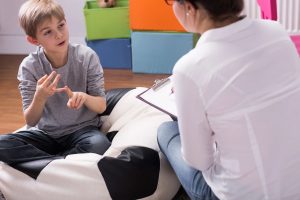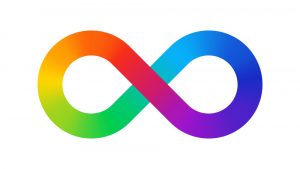TL;DR
- Ableism shows up in our language and actions, even at school.
- It’s important to consider both identity first and people first language.
- Ableist language factors into our daily interactions with each other and the structures of power around us.
What is ableism?
People experience disability differently. There are physical, cognitive, and learning disabilities, and mental illnesses, to name a few. Ableism is discrimination toward people with disabilities. It shows up everywhere, even in our own classrooms.
Ableism can appear in our interactions, behaviors, and policies. In school settings, it may be interpersonal prejudice, like writing off anxious or depressed students and colleagues as “sensitive” or “lazy.” It may also take shape in how we diagnose and provide accommodation for girls and students of color with disabilities. It can appear structurally in how we set up our classroom layout, seating, or visual aids.
Ableist Language: How do we talk about disability?
Language matters. It factors into our daily interactions with each other and the structures of power around us. In education, the ways we discuss disability may vary.
Many well-meaning approaches to disability education in our schools might still cause stigma toward disabled students, educators, and their experiences.
Here are some examples:

Ableist Language: Identity First vs. People First Language
The best way to navigate the language of identity is to ask the people who have the experience what they prefer.
There’s a phrase used in social justice movements: “Nothing about us without us.“ This phrase was frequently used as a rally cry in disability rights movements dating back to the 1970s, in which disabled people demanded to be included in legislative decisions about their own rights. These movements led to the Deaf President Now campaign at Gallaudet University, the reform of psychiatric care in America, and also the Americans with Disabilities Act. These movements have shown us that in education, it’s not enough to simply be ADA or 504 compliant; we must listen to and act upon the experiences of disabled people and students.
Identity first language, on one hand, states a person’s experience upfront. Someone may refer to themselves as an “autistic person” or say “I’m bipolar,” which prioritizes their neurodivergence as part of their identity.
Others may prefer person-first language, which acknowledges their humanity before all else. It’s a way of signaling that their disability is only one part of their experience. They may use terms like “I have OCD” or “person with visual impairment.”
Ableist Language: “Different Ability”
Euphemisms are often used to discuss disability. This is typically a result of ableism and a lack of understanding. Terms like “different ability” or “special ability,” for example, draw more attention to what makes people with disabilities feel like outsiders. It renders the very real experience of disability invisible. The intention might be a rejection of deficit models. However, when it comes to people, euphemisms are a form of erasure.
This carries the potential of invalidating the realities disabled people experience. The term ‘different ability’ tries to acknowledge that even despite challenges, people with disabilities can still do so much. Realistically, the idea of ‘different’ = ‘outsider’ just won’t help students (or anybody) feel like they belong.
The only time that ‘different’ has a place in our language about disabled learners is when it’s about our teaching. Give them different entry points into our content. Find out what types of learners there are in your classroom. Differentiate your instruction, not your students.
This month and every month, educate yourself about the variety of experiences that your disabled students have. Notice who and where they are throughout your school. Elevate and amplify them and in your community. Share on XAbleist Language: Functioning Labels Are Not Functional
The language of disability sometimes includes functioning labels. These labels are common when talking about cognitive or developmental disabilities such as Downs Syndrome, Autism, and ADHD. Functioning labels can also apply to mental illness because the extent of their symptoms may not be visible to others. Moreover, most people don’t consider the latter as a disability, because to many, mental illness is invisible and still very much stigmatized. Functioning labels are a deficit model that rewards those who ‘pass’ and pities or silences those who don’t.
High Functioning: Limits Struggles
When a person is labeled “high functioning,” many take this to mean ‘less disabled.’ People with disabilities have different strengths and weaknesses, just like anyone else. A label like “high functioning” makes it harder to be validated, and can often lead to behaviors like masking, which causes undue stress and anxiety.
Masking has serious implications for people with disabilities and mental health concerns. This is especially true at school. If pressured to perform tasks or behave as ‘typical’ people do, it could mean disabled students receive less care, services, or accommodation, even when those services are necessary to improve their life or their learning.
Low Functioning: Limits Strengths
People labeled “low functioning” are also subject to stigma. This invalidation can result in being spoken over, rather than advocated for or amplified. Moreover, just because a student is nonverbal does not mean they aren’t smart. When we fail to ask and help them effectively express their needs, it leads to situations where needs are assumed rather than met.
Helpful language to use when describing someone’s abilities or needs are phrases like “higher support needs.” Specifying the support needs of the individual may also be helpful. Examples may include auditory support, communication assistance, or schedule modifications.
People with disabilities are valid whether or not they pass as ‘typical.’ Honoring neurodiversity means understanding that everyone has something valuable to contribute, and the amount of accommodation they need to have equal access does not define their intelligence, creativity, or worth.
[scroll down to keep reading]
Ableist Language: The Gendered History of Autism
The language we use to refer to and talk about disability also has intersectional implications. The intersection of ableism with sexism prevents girls from receiving the support they need from educators. Girls are written off as ‘anxious’ or ‘chatty,’ instead of being diagnosed with ADHD or ASD even if it’s warranted. 
This disparity comes from early autism spectrum diagnosis criteria favoring traits found (or socialized) in young boys. Children learn social constructs like gender at a young age. Thus, gender roles often contribute to whether or not disabled girls and women are validated. Many school-age girls do not get a diagnosis until later in life, if at all, therefore increasing masking/performance anxiety.
These gendered diagnostic phenomena have birthed movements like “Light It Up Blue” for autism awareness. Due to its association with gender stereotypes, autistic people have created their own movement as a result. This movement is known as #RedInstead, and has reclaimed autism awareness to reflect acceptance and agency for autistic people. They also have hashtags such as #ActuallyAutistic, which reflects the stories of people on the autism spectrum.

The rainbow infinity symbol has replaced the puzzle piece in autism awareness; it represents the spectrum of neurodiversity.
How we can teach better:
As educational professionals, we can and must do better by students with disabilities at our schools. This awareness and action can start NOW! Here’s how:
- Read and annotate your students’ IEPs or 504 plans before the first day. I create a “cheat sheet” of information I am going to need about students and annotate the documents if I have to.
- Educate yourself about your students’ experiences. The first week of school begins with a survey in which I ask about student interests, learning styles, and skills they hope to acquire. Responding to each student facilitates a conversation about their identity as well as their learning. Asking about their prior learning success stories (and failures) then lets me know what works for them. Connecting with families for insight is also extremely helpful. It’s valuable to know what life is like when they’re not spending time in our classroom.
- Know that not all students with the same diagnosis experience their disability the same. Students might have the same disability, but different experiences and needs. This year, I learned more about the differences between inattentive and hyperactive ADHD, which was so eye-opening. As I learn more, I can help students with these experiences succeed.
- Replace pity with acceptance. Pitying people with disabilities leads to stigma and saviorism. Disabled people deserve dignity and respect. Teachers must make sure that students are heard in ways that work for them.
This month and every month, educate yourself about the variety of experiences that your disabled students have. Notice who and where they are throughout your school. Elevate and amplify them and in your community.
About Cait O’Connor
Cait O’Connor is a fourth-year public school English/ESOL educator in New York, committed to social justice and equity in education and beyond.


